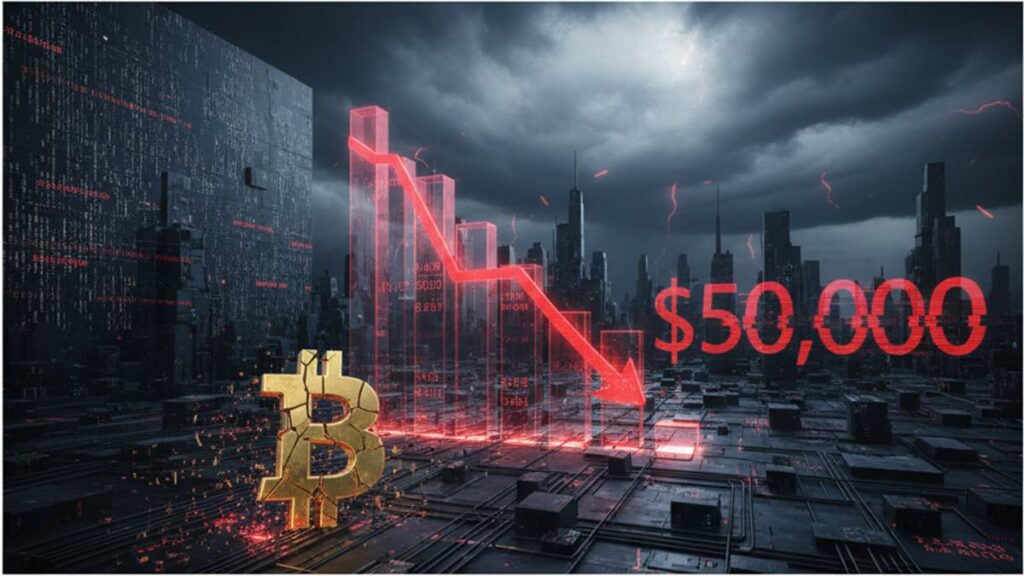TL;DR
- Bloomberg analyst Mike McGlone projects a decline of up to 60% from Bitcoin’s all-time high for the coming year.
- Bearish sentiment is due to risk aversion amid concerns about the AI and stock bubble.
- Lack of liquidity in the markets and Federal Reserve uncertainty add pressure on BTC.
The pioneer crypto, Bitcoin, is currently at a critical juncture. The euphoria from the beginning of the year, when a $200,000 rally was projected for this date, is long gone; the market has made a 360-degree turn since then.
Mike McGlone, Bloomberg Intelligence commodity strategist, delivered a strong signal, in fact, he launched a gloomy prediction: Bitcoin $50,000 by 2026. The strategist expects the price of the pioneer asset to fall 60% below its all-time high.
McGlone bases his hypothesis on a set of macroeconomic factors, including surging gold, lower oil prices, and stock market volatility that will incentivize investors to flee from riskier assets like BTC. The warning is especially valid “if the S&P 500 has a third down year since 2008,” the analyst noted on LinkedIn. This call for caution aligns with other bearish voices, including that of Arthur Hayes, co-founder of BitMEX, marking a clear bearish shift.

Deleveraging, AI Bubble, and Fed Uncertainty: The Three Key Risks
Before closing this post, Bitcoin was trading near $86,000, struggling to find a stable course. Analysts David Brickell and Chris Mills, from the London Crypto Club, establish three main risks supporting the selling pressure that could lead to Bitcoin $50,000 materializing in 2026.
Firstly, the massive liquidation in October wiped out over $20 billion, a capital loss that will take time to recover. DefiLlama data shows that Bitcoin ETFs recorded net outflows of more than $3.5 billion in November, their worst month since February. Added to this is the slowdown in purchases by corporate treasuries, which could be forced to sell their BTC holdings if their Net Asset Value (NAV) strategies slip underwater.
The second risk is the fear of a valuation bubble in the Artificial Intelligence (AI) sector. Crypto-assets, being considered speculative, replicate the performance of frontier technology stocks. The caution in the stock market, despite good results from companies like Nvidia, suggests that investors are not yet ready to abandon the “AI bubble” narrative, maintaining pressure on BTC.
Finally, the lack of liquidity and Federal Reserve (Fed) uncertainty weigh on sentiment. Awaiting the December interest rate meeting, investors are seeking directional clarity.
Although the odds of a December rate cut rose sharply to 71%, thanks to recent comments from New York Fed President John Williams, other officials, such as Susan Collins and Michael Barr, insist on proceeding with caution, keeping the direction of the markets in suspense.










